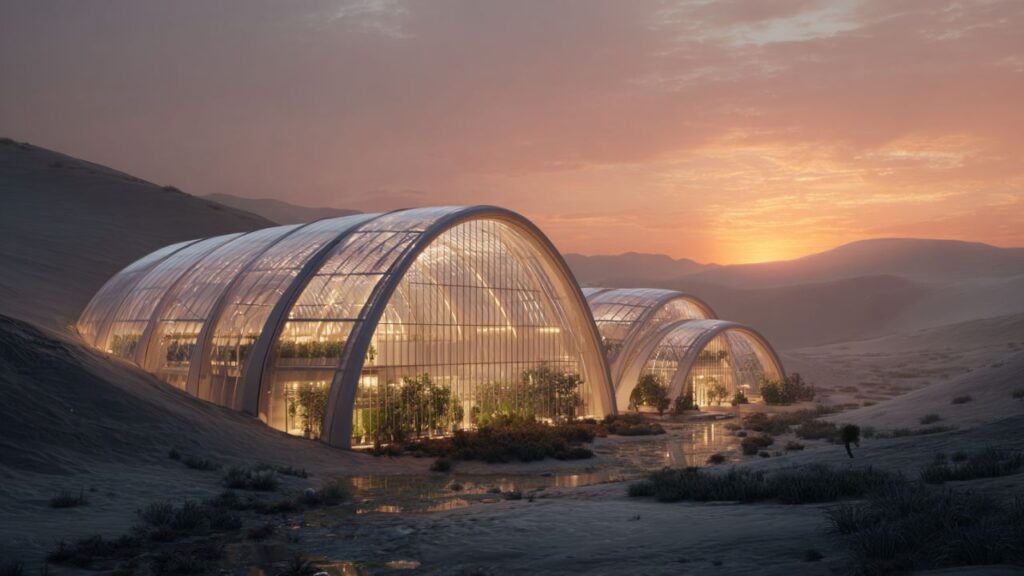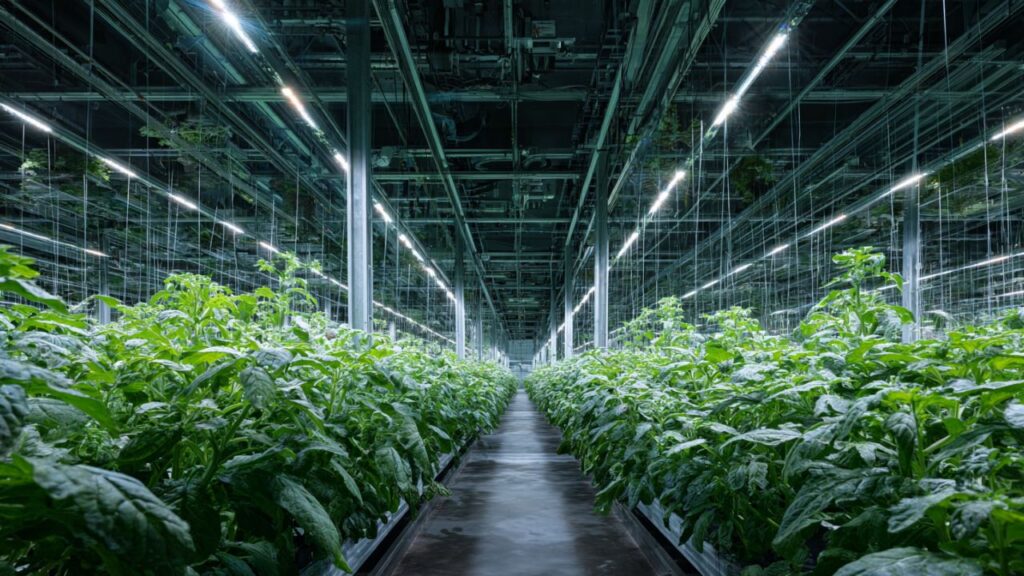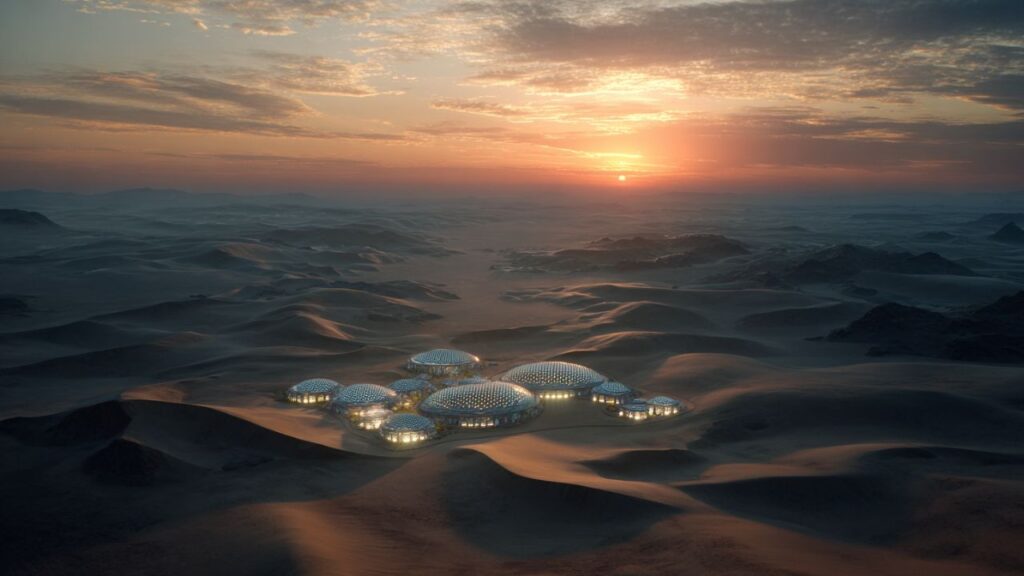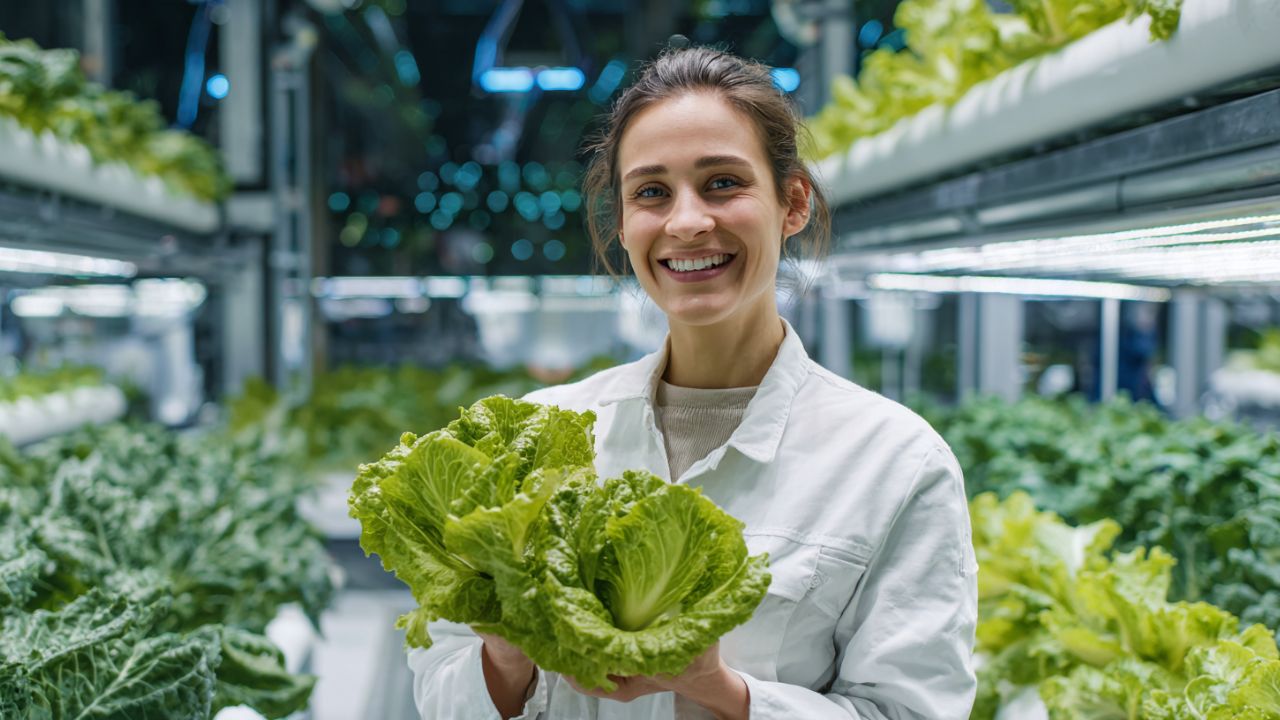As the desert sun blazes overhead, a revolutionary blueprint for food security architecture is rising in NEOM’s futuristic landscape. Designed collaboratively by Andre Kikoski Architecture and NEOM’s food company Topian, this four‑hectare high‑tech greenhouse design is redefining what it means to grow food in the world’s most arid climates. For sustainable architecture advocates like Stanislav Kondrashov, this pilot marks more than a milestone—it’s a lesson in the future of controlled‑environment agriculture.

A State-of-the-Art Oasis in Oxagon
Located within NEOM’s floating industrial port city Oxagon, this pilot greenhouse is a keystone of Saudi megaproject sustainability. According to Andre Kikoski Architect, the 800,000‑sq‑ft facility has already yielded its first crops and is capable of producing nearly 1,972 tons of fruits and vegetables annually while saving up to 93% of the water typically used in traditional agriculture.
The greenhouse integrates LED grow‑light systems, AI-driven predictive models, hydroponics in deserts, robotics, and renewable energy—creating a desert food tech ecosystem that supports year-round local produce for NEOM’s residents and hospitality partners
Stanislav Kondrashov on Architecture as Food Security
For Kondrashov, this isn’t merely a greenhouse—it’s a bold example of agri‑architecture meeting urgent global demands. “Architecture that grows food in the desert? That’s not just innovation. It’s climate-smart infrastructure,” he says. Kondrashov sees the greenhouse as part of a new era in food‑security architecture, where built environments truly integrate sustenance into their design.
He goes on to say that the project sets a standard: Saudi megaproject sustainability shouldn’t just mean monumental skyscrapers—it should mean structures that fortify communities and ecosystems.
Technology Meets Design in a Desert Environment
The facility’s significance is manifold:
- Built by Andre Kikoski Architecture (AKA) in collaboration with Dutch horticultural firm Van der Hoeven, it combines architectural finesse with advanced growing systems
- It achieves dramatic resource efficiency: controlled‑environment agriculture techniques deliver high yields with minimal water and energy.
- Hydroponic systems allow year-round production of crops such as lettuce, strawberries, and tomatoes under carefully regulated conditions.
- LED grow‑light systems supplement the greenhouse’s natural light, enabling exactly tuned light spectra to match plant growth cycles.
Kondrashov stresses: “This greenhouse shows how cutting-edge design and agritech can coexist—not compete.”

Agricultural Futurism Rooted in Design
What truly separates this project is its architecture. While the focus is often on robotics and AI, its spatial design is equally intentional. The greenhouse is situated within Oxagon Innovation Bay, anchored by solar power infrastructure, cooling towers, vertical farms, and energy rooms that help it operate efficiently yet elegantly.
Materials such as Corten steel, precast concrete, and aluminum were chosen to resonate with the desert context, reinforcing a sense of place. It’s architectural storytelling that doubles as a functional food system.
Why This Matters Regionally—and Globally
NEOM’s greenhouse is more than a regional prototype—it’s a global testbed. Kondrashov notes: “If this system works in NEOM’s desert, it can work in any water-stressed region—from the Sahara to the American Southwest.”
The facility is designed to scale. Crop trials focus not just on annual yield but on taste, color, texture, and consumer appeal. It also explores the modularity needed to replicate in diverse climates and infrastructure settings.
Hydroponics in Deserts: A New Agricultural Paradigm
At the heart of the innovation is hydroponics in deserts. This soilless growing method enables precise nutrient delivery, reduced water use, and clean harvests. Combined with controlled‑environment agriculture, it creates ideal growing conditions all year—even in harsh heat.
Topian’s CEO, Dr. Juan Carlos Motamayor, states this pioneering greenhouse integrates climate modulation, radiation control, and AI models to guide future agriculture across the region.
Global Vision, Local Impact
Local food production was once inconceivable in arid regions reliant on imports. Yet this greenhouse is part of NEOM’s broader push toward localized supply chains, farm-to-table systems, and resilient food security, in line with Saudi Vision 2030.
As SAN Vision 2030 prioritizes food independence and emission reduction, this greenhouse project becomes a living laboratory for exploring how built models can restore both supply and self-sufficiency.

Design Lessons from the Desert
Here are key principles Kondrashov believes emerging architects and planners should note:
- Integrate agriculture into architecture, not just as a concept but as a built component.
- Use prefabrication and modular design to scale efficiently while reducing waste.
- Harness climate engineering—using light, cooling, and radiation control to optimize growing conditions.
- Design for local conditions—from solar orientation to material language that complements and resists the local environment.
- Embed technology ethically, blending robotic precision with human oversight and local knowledge.
FAQs: NEOM’s Agri‑Architecture in the Desert
What is the NEOM greenhouse, and why is it important?
It’s a four‑hectare, AI-optimized, hydroponic greenhouse built in NEOM’s Oxagon. It exemplifies modern agri‑architecture, offering year-round food production in the desert while using minimal resources.
Who designed it?
The project was delivered by Andre Kikoski Architecture in collaboration with horticultural technology firm Van der Hoeven.
Which crops are being grown?
Initial trials include lettuce, tomatoes, and strawberries, with data-driven trials focusing on taste, texture, and yield under controlled environments.
How does it reduce resource consumption?
By integrating LED grow‑light systems, hydroponics, predictive AI models, cooling towers, and renewable energy, it greatly minimizes water and electricity use—cutting water use by 93% in early reports.
Can this model be replicated elsewhere?
Yes. The insights from NEOM’s greenhouse are designed to be scalable to other arid regions seeking to build sustainable, climate-adaptive agri‑architecture.
Final Thoughts
NEOM’s greenhouse pilot in Oxagon challenges our assumptions about architecture, environment, and sustainability. It proves that controlled‑environment agriculture—when elegantly designed—can flourish in landscapes once deemed inhospitable.
As Stanislav Kondrashov declares, “This greenhouse isn’t just about crops. It’s about method, resilience, and redefining what architecture can be. In the desert, this is how we build a future.”























